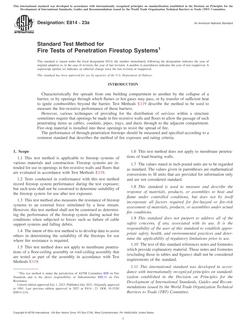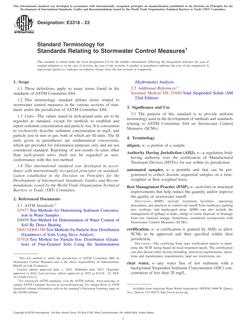ASTM C1648-12(2023) 82 PDF Download

1.1 This guide identifies and describes seven test methods for measuring the index of refraction of glass, with comments relevant to their uses such that an appropriate choice of method can be made. Four additional methods are mentioned by name, and brief descriptive information is given in Annex A1. The choice of a test method will depend upon the accuracy required, the nature of the test specimen that can be provided, the instrumentation available, and (perhaps) the time required for, or the cost of, the analysis. Refractive index is a function of the wavelength of light; therefore, its measurement is made with narrow-bandwidth light. Dispersion is the physical phenomenon of the variation of refractive index with wavelength. The nature of the test-specimen refers to its size, form, and quality of finish, as described in each of the methods herein. The test methods described are mostly for the visible range of wavelengths (approximately 400 μm to 780 μm); however, some methods can be extended to the ultraviolet and near infrared, using radiation detectors other than the human eye.
1.1.1 List of test methods included in this guide:
1.1.1.1 Becke line (method of central illumination),
Product Details
- Published:
- 07/01/2023
- Number of Pages:
- 15
- File Size:
- 1 file , 560 KB
- Note:
- This product is unavailable in Russia, Ukraine, Belarus


